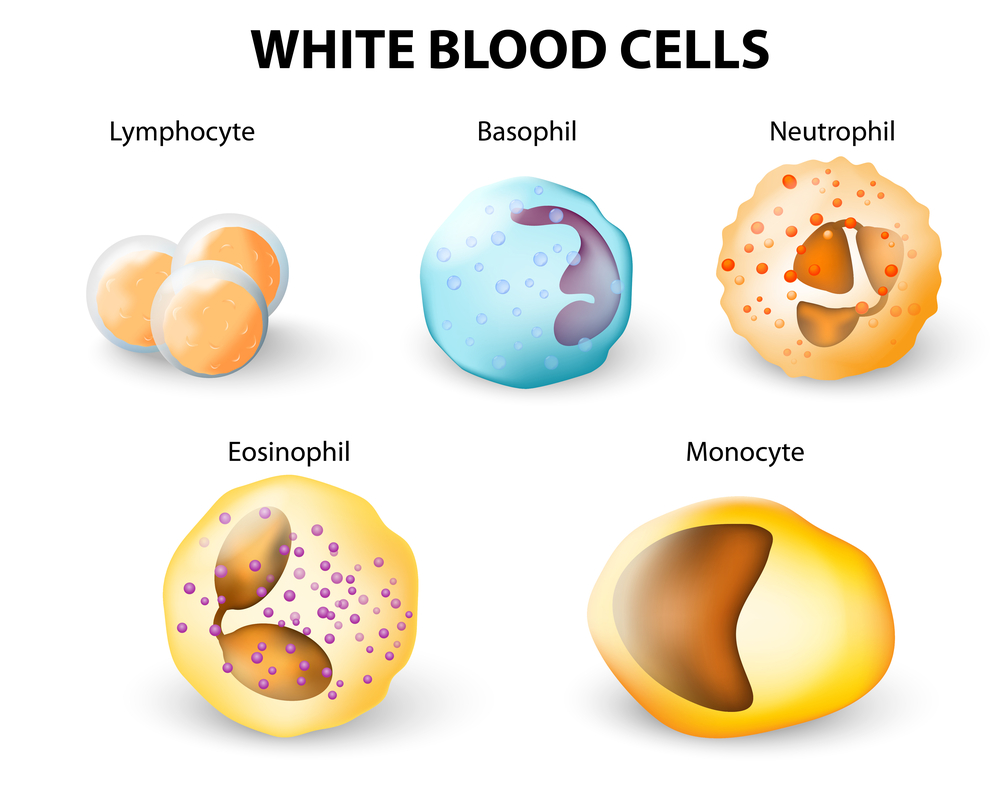Ewing, New Jersey and Vancouver, B.C. based Celator Pharmaceuticals, Inc., a clinical-stage biopharmaceutical company, has announced that the final payment is being accelerated by the Leukemia & Lymphoma Society (LLS) in support of a Phase 3 clinical study of Celator’s lead product candidate — CPX-351. A special formulation of two standard chemotherapy drugs, cytarabine and daunorubicin for liposomal injection in treatment of patients with high-risk (secondary) acute myeloid leukemia (AML) CPX-351 is designed to deliver a more optimal ratio of the drugs with less toxicity, to the standard two drug combination.
The LLS defines AML as a quickly progressing disease in which too many immature white blood cells (not lymphocytes) are found in the blood and bone marrow. According to Cancer Facts and Figures, in 2015 approximately 20,830 new cases of AML will be diagnosed in the United States and 10,460 deaths will occur from the disease. More information about AML can be found at: http://www.lls.org/events/information-for-patients-with-acute-myeloid-leukemia-aml.
The LLS has moved a payment of $400,000 originally earmarked to fund the trial’s final overall survival analysis milestone forward, adding it to a scheduled milestone payment for induction response rate analysis, which increases the payment from the originally specified amount of $500,000 to $900,000. This brings total LLS funding supplied to date associated with the Phase 3 study to $4.9 million.
Celator says the financial support provided by the LLS Therapy Acceleration Program (TAP) has been important in expediting completion of the Phase 3, multicenter trial of CPX-351 versus conventional cytarabine plus daunorubicin in older patients with untreated high risk (secondary) AML. Study subject enrollment in the was completed ahead of schedule, with positive induction response results were announced earlier this month (see below). Overall survival results, which are the study’s primary endpoint, are expected in the first quarter of 2016. This study is planned to support a New Drug Application (NDA) with the U.S. Food and Drug Administration (FDA) expected in the second half of 2016.
 “We continue to be very pleased with the progress and positive outcomes Celator has achieved with the development of CPX-351,” says Louis J. DeGennaro, Ph.D. , LLS’s chief executive officer. “We felt it appropriate to accelerate our payments to assist Celator in completing the activities necessary to file the NDA with the FDA as soon as possible once the overall survival data become available. We are optimistic for a successful outcome of the Phase 3 study and want to help accelerate the availability of promising therapies such as CPX-351 to these patients who are in dire need of improved outcomes.”
“We continue to be very pleased with the progress and positive outcomes Celator has achieved with the development of CPX-351,” says Louis J. DeGennaro, Ph.D. , LLS’s chief executive officer. “We felt it appropriate to accelerate our payments to assist Celator in completing the activities necessary to file the NDA with the FDA as soon as possible once the overall survival data become available. We are optimistic for a successful outcome of the Phase 3 study and want to help accelerate the availability of promising therapies such as CPX-351 to these patients who are in dire need of improved outcomes.”
As part of a 2009 partnership, the LLS provided $4.1 million to help fund Celator’s Phase 2 clinical development program, which included two randomized, controlled studies. Celator has conducted two randomized, controlled, Phase 2 studies with CPX-351. The first study was conducted in newly diagnosed elderly AML patients and the second study was conducted in patients with AML in first relapse. In both Phase 2 studies, treatment with CPX-351 resulted in significant improvements in response rates, 60-day mortality, and overall survival in the highest risk patients.
An open-label, single-arm, Phase 2 study applied a thorough PK/PD assessment designed to: (1) measure the effects of CPX-351 on cardiac repolarization following the first induction cycle of CPX-351, and (2) correlate changes in cardiac repolarization with plasma pharmacokinetic data for cytarabine and daunorubicin and their metabolites. The study began enrolling patients in August 2014. Each patient received a first induction of CPX-351 on days 1, 3, and 5 and, if necessary, a second induction for patients with reduced leukemia/MDS burden not yet achieving a disease-free state. Responding patients were eligible for up to four consolidation courses. Analysis of treatment impact on cardiac electrophysiology, as measured by the QTc interval, and PK assessments were performed following the first induction course.
The study enrolled patients with newly diagnosed de novo and high-risk (secondary) AML, relapsed/refractory AML and relapsed ALL. Fifteen of the 26 patients enrolled are evaluable for response at this time. Six of the 15 patients responded to CPX-351 (defined as CR-complete response or CRi-complete response with incomplete hematologic recovery) including two of three patients (67%) with high-risk (secondary) AML, the study population of the ongoing Phase 3 trial. Responses were also seen in patients with de novo AML, relapsed AML, and relapsed ALL.
 “We are happy to report that this study confirms the broad activity of CPX-351 in multiple populations of acute leukemia patients,” says Tara Lin, M.D. , Assistant Professor of Medicine at The University of Kansas Cancer Center, the lead investigator of this study in a release, “and will report cardiac repolarization and pharmacokinetic data necessary for the registration of CPX-351 later this year.”
“We are happy to report that this study confirms the broad activity of CPX-351 in multiple populations of acute leukemia patients,” says Tara Lin, M.D. , Assistant Professor of Medicine at The University of Kansas Cancer Center, the lead investigator of this study in a release, “and will report cardiac repolarization and pharmacokinetic data necessary for the registration of CPX-351 later this year.”
The Phase 3 study comparing CPX-351 to the current standard of care, known as 7+3, is being conducted in patients with high-risk (secondary) AML. The Phase 3 study completed enrollment in November 2014. Patients in the trial are 60 to 75 years of age, newly diagnosed with AML, which they developed as a secondary cancer. This high-risk form of AML has an especially grim prognosis as 80 percent of patients die within five years. The standard of care for patients with AML has not changed for at least 30 years.
On June 24, Celator released induction response data, a secondary endpoint, which indicated that CPX-351, performed better than 7+3 (conventional cytarabine and daunorubicin), with a relative improvement in response rate of 43.2% (47.7% for CPX-351 vs. 33.3% for the 7+3 regimen) observed, consistent with two other previous Phase II trials with CPX-351. Data reflecting the primary endpoint of the study, overall survival, is expected in the first quarter of 2016. Since response rate can be an important prognostic indicator of overall survival and clinical benefit, Celator says this new data is very encouraging. Initial data from a secondary endpoint, induction response rate, and primary endpoint data, of overall survival, is expected in the first quarter of 2016.
 “We continue to work expeditiously to bring CPX-351 before the FDA as a potential new treatment option for patients with acute hematologic malignancies,” says Scott Jackson, R. Ph. , Celator’s chief executive officer. “Clinical pharmacology studies are required by the FDA for new drugs in development, so we are pleased to have completed enrollment in this Phase 2 study to support a NDA submission for CPX-351. We expect to report top-line results from this study by the end of the year.”
“We continue to work expeditiously to bring CPX-351 before the FDA as a potential new treatment option for patients with acute hematologic malignancies,” says Scott Jackson, R. Ph. , Celator’s chief executive officer. “Clinical pharmacology studies are required by the FDA for new drugs in development, so we are pleased to have completed enrollment in this Phase 2 study to support a NDA submission for CPX-351. We expect to report top-line results from this study by the end of the year.”
“There is a great need for new options for patients with AML, and this data is certainly very encouraging,” observes the LLS’s Dr. DeGennaro. “We are very eager to follow the progress of this clinical trial and are hopeful for continued positive outcomes once more data is released early next year.”
The Leukemia & Lymphoma Society’s partnership with Celator in development of CPX-351 that started with the Phase 2 studies has continued in Phase 3, and positive results from those two earlier studies were used in designing the current Phase 3 study. The LLS’s TAP program supports private sector and academic-based projects with the objective to advance investigational therapies with high prospects for providing near-term benefit to patients fighting acute hematologic malignancies, including acute myeloid leukemia (AML), acute lymphoblastic leukemia (ALL), and myelodysplastic syndrome (MDS).
“This additional funding comes at an opportune time,” says Mr. Jackson. “With the recent announcement of positive induction response rate results for our Phase 3 study, we continue to move forward with our preparations for an NDA filing and ultimately commercialization of CPX-351 in the United States. These activities will benefit from the earlier availability of TAP funds and with positive overall survival results in our Phase 3 study, CPX-351 will be available to AML patients as soon as possible. Our partnership with LLS, which began back in 2008, has been extremely productive towards that end.”
CPX-351
Celator says its CPX-351 (cytarabine:daunorubicin) Liposome for Injection candidate represents an innovative approach to developing combinations of drugs, in which drug molar ratios with synergistic anti-tumor activity are co-encapsulated in a drug delivery vehicle in order to maintain the desired ratio following administration.
Celator’s proprietary technology platform, CombiPlex, enables rational design and rapid evaluation of optimized combinations incorporating traditional chemotherapies as well as molecularly targeted agents to deliver enhanced anti-cancer activity. CombiPlex addresses several fundamental shortcomings of conventional combination regimens, as well as the challenges inherent in combination drug development, by identifying the most effective synergistic molar ratio of the drugs being combined in vitro, and fixing this ratio in a nano-scale drug delivery complex to maintain the optimized combination after administration and ensure its exposure to the tumor. The company is advancing the CombiPlex platform and broadening its application to include molecularly targeted therapies and epigenetic modulators.
CPX-351 has been granted orphan drug status by the U.S. Food and Drug Administration and the European Commission for treatment of Acute Myeloid Leukemia (AML). The US Orphan Drug Act is intended to encourage companies to develop safe and effective therapies for the treatment of rare diseases and disorders. In addition to providing a seven year term of market exclusivity upon final FDA approval, orphan drug designation also positions sponsoring companies to be able to leverage a wide range of financial and regulatory benefits, including government and institutional grants, and waiver of FDA user fees for the potential submission of a NDA.
For more information, visit Celator’s website at: http://www.celatorpharma.com. Information on ongoing trials is available at: http://www.clinicaltrials.gov.
Founded in 1949 and headquartered in White Plains, NY, the Leukemia & Lymphoma Society (LLS) is the world’s largest voluntary health agency dedicated to blood cancer. The Society’s mission is to find cures for leukemia, lymphoma, and multiple myeloma, and to improve quality of life of patients and their families. LLS funds lifesaving blood cancer research around the world, provides free information and support services, and is the voice for all blood cancer patients seeking access to quality, affordable, coordinated care. The LLS has chapters throughout the United States and Canada. To learn more, visit http://www.LLS.org or contact the LLS Information Resource Center at (800) 955-4572, Monday through Friday, 9 a.m. to 9 p.m. ET.
Sources:
Celator Pharmaceuticals, Inc.
Leukemia & Lymphoma Society
Image Credits:
Celator Pharmaceuticals, Inc.
Leukemia & Lymphoma Society
University of Kansas Cancer Center


